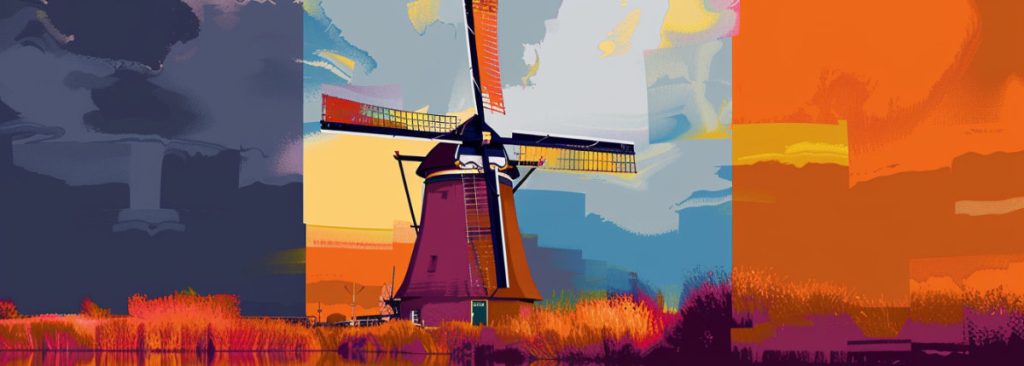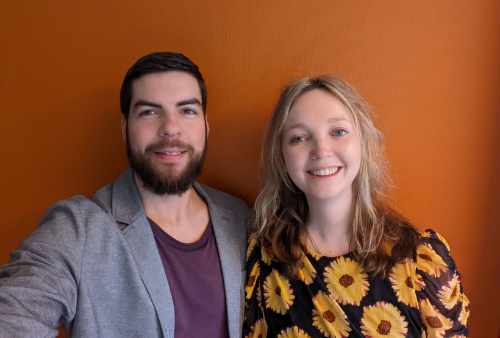Psilocybin, a natural substance found in certain mushrooms, has been used for centuries in traditional indigenous practices for spiritual and medicinal purposes. In recent years, scientific research has begun to explore the potential benefits of psilocybin in treating various mental health conditions. This article will delve into the history, legal status, and therapeutic potential of psilocybin truffles.
A Personal Journey with Psilocybin
For many, the decision to try psilocybin is a deeply personal one. I remember my first experience with psilocybin truffles. I was nervous but also excited to explore my mind in a new way. As the effects began to take hold, I found myself immersed in a world of vibrant colours and deep introspection. It was like a journey into my own psyche, where I could confront my fears and gain new insights into my life.
The experience of taking psilocybin can be likened to diving into a deep ocean of your own consciousness. At first, it can be intimidating, but as you explore the depths, you discover hidden treasures and beautiful landscapes that you never knew existed within yourself.

A Rich History of Psilocybin Use
Psilocybin has been used for centuries in traditional indigenous practices for spiritual and medicinal purposes. Shamans and healers have long recognized the power of these mushrooms to facilitate spiritual experiences and treat various ailments. In the 1950s and 60s, Western researchers began to study the effects of psilocybin, with promising results in treating anxiety, depression, and addiction.
However, as the counterculture movement of the 1960s took hold, psilocybin and other psychedelics became associated with rebellion and anti-establishment attitudes. As a result, they were made illegal in most countries, effectively halting scientific research for decades.
In recent years, there has been a resurgence of interest in the therapeutic potential of psilocybin. Modern studies have shown promising results in using psilocybin to treat a range of mental health conditions, including depression, anxiety, PTSD, and addiction.
Psilocybin is like a wise, ancient teacher who has been guiding people towards healing and self-discovery for generations. As we rediscover this teacher in the modern world, we are learning how to harness its wisdom to help those struggling with mental health issues and those searching for meaning.
For centuries, indigenous cultures around the world have used psilocybin mushrooms for spiritual and medicinal purposes. In Central and South America, the Mazatec people of Mexico have a long tradition of using psilocybin mushrooms in healing ceremonies and religious rituals. The mushrooms, known locally as "nti si tho" or "little saints," are considered sacred and are used to facilitate communication with the divine, heal physical and emotional ailments, and gain insight into personal and social issues.
Similarly, in North America, some Native American tribes have used psilocybin mushrooms as part of their spiritual practices. The Ojibwe people, for example, have a tradition of using mushrooms in "Grand Medicine Society" ceremonies, which involve dancing, singing, and the consumption of psilocybin mushrooms to induce visions and facilitate spiritual growth.
These traditional practices have informed modern research into the therapeutic potential of psilocybin. By studying the ways in which indigenous cultures have used these mushrooms for centuries, researchers can gain valuable insights into their potential applications in contemporary mental health treatment.

Legal Status in the Netherlands
In the Netherlands, the legal status of psilocybin is unique. While psychedelic mushrooms have been banned since 2008, psychedelic truffles remain legal to purchase in shops. This legal loophole has allowed people to explore the benefits of psilocybin in a controlled setting safely.
The legal status of psychedelic truffles in the Netherlands is like a hidden doorway to a world of self-discovery. While the main entrance (mushrooms) may be closed, the side entrance (truffles) remains open for those who seek to explore their minds safely and legally.
In 2008, the Dutch government banned the sale and possession of psychedelic mushrooms due to concerns about public health and safety. The decision came after a series of high-profile incidents involving tourists who had consumed magic mushrooms and experienced adverse reactions. The ban was met with mixed reactions from the public, with some arguing that it was an overreaction and others supporting the government's decision to prioritize public safety.
However, the ban led to an unintended consequence: the rise of psilocybin truffles as a legal alternative. Truffles, which are underground clumps of fungal mycelium, contain the same active compounds as magic mushrooms but were not included in the ban. As a result, smart shops in the Netherlands began selling psilocybin truffles, providing a legal way for people to experience the effects of psilocybin.
Safety and Risks
For healthy individuals, the use of psilocybin truffles carries little to no physical risks. In over 2000 research sessions since 2000, only a handful of reported long-term negative effects have been reported. The toxicity of psilocybin is incredibly low, making it one of the safest psychoactive substances known to humans.
However, it’s important to approach psilocybin with respect and care. Set and setting – one’s mindset and environment – play a crucial role in shaping the experience. Having a clear intention, a comfortable and safe space, and a trusted friend or guide present is recommended.
Using psilocybin truffles is like taking a well-maintained car for a drive. While risks are always involved in any activity, the chances of experiencing serious harm are low when you follow the proper safety guidelines and have a reliable vehicle.

Maximizing Benefits, Minimizing Risks
To make the most of a psilocybin experience, preparation is key. This includes researching proper dosage, setting clear intentions, and creating a supportive environment. Many people find it helpful to have a trusted friend or guide present, especially for first-time experiences.
Preparing for a psilocybin journey is like packing for a hiking trip. You want to make sure you have the right gear, a clear map, and a supportive team to ensure a safe and enjoyable adventure. With the right preparation and mindset, psilocybin can offer profound insights, emotional healing, and a renewed sense of connection to oneself and the world.
Psilocybin truffles offer a unique opportunity for self-discovery and healing. With a rich history of traditional use and promising results in modern research, psilocybin is once again being recognized for its potential benefits. In the Netherlands, the legal status of truffles provides a safe and accessible way for individuals to explore this powerful substance.
As with any psychoactive substance, it’s important to approach psilocybin with respect, preparation, and a supportive environment. By doing so, one can maximize the potential benefits while minimizing risks. For those who feel called to explore their consciousness and confront their inner world, psilocybin truffles may offer a profound and transformative experience.
At FLO Coaching, we offer guided psilocybin truffle sessions, supported by experienced coaches. If you have any questions or are looking for help preparing your first psychedelic experience, please feel free to contact us. We are happy to introduce you to the fascinating world of expanding consciousness in a responsible way. This is how we guide you towards a new phase of holistic health and well-being.
Frequently Asked Questions About Psilocybin
Psilocybin is a naturally occurring psychedelic compound found in certain types of mushrooms. When ingested, psilocybin is converted into psilocin, which binds to serotonin receptors in the brain, particularly the 5-HT2A receptor. This interaction leads to changes in perception, thought patterns, and emotional states, often resulting in a profound and transformative experience. Psilocybin has been shown to increase connectivity between different brain regions, reduce activity in the default mode network (which is associated with self-referential thought), and enhance feelings of empathy, interconnectedness, and spiritual significance.
Psilocybin mushrooms have been used in indigenous cultures for centuries, particularly in Central and South America. The Mazatec people of Mexico, for example, have a long tradition of using psilocybin mushrooms in healing ceremonies and religious rituals. They believe that the mushrooms, known as “nti si tho” or “little saints,” facilitate communication with the divine, heal physical and emotional ailments, and provide insight into personal and social issues. Similarly, some Native American tribes, such as the Ojibwe people, have used psilocybin mushrooms in spiritual practices like the “Grand Medicine Society” ceremonies.
In 2008, the Dutch government banned the sale and possession of psychedelic mushrooms due to concerns about public health and safety, particularly after a series of high-profile incidents involving tourists who had consumed magic mushrooms and experienced adverse reactions. However, the ban unintentionally led to the rise of psilocybin truffles as a legal alternative. Truffles, which are underground clumps of fungal mycelium, contain the same active compounds as magic mushrooms but were not included in the ban. As a result, smart shops in the Netherlands started selling psilocybin truffles, providing a legal way for people to experience the effects of psilocybin.
Microdosing involves taking small, sub-perceptual doses of psilocybin (typically around 0.1-0.5 grams of dried mushrooms or truffles) every few days as part of a regular regimen. Microdosing is believed to enhance creativity, productivity, and overall well-being without inducing a full psychedelic experience. On the other hand, macrodosing involves taking larger doses of psilocybin (usually 1-5 grams) to induce a more intense psychedelic experience. Macrodoses are often used in therapeutic contexts to facilitate deep introspection, emotional healing, and the exploration of one’s psyche. Potential benefits of macrodosing include the alleviation of symptoms related to depression, anxiety, PTSD, and addiction.
To prepare for a psilocybin truffle journey, it’s important to set clear intentions, create a supportive environment, and follow practical guidelines. This includes choosing a safe, quiet, and comfortable location, arranging for a trusted guide or sitter, and creating a playlist of instrumental music that resonates with your intention. It’s also recommended to eat a light, healthy meal a few hours before the journey and to avoid alcohol or other substances that could interfere with the effects of psilocybin. After the journey, take time to reflect on your experiences and integrate any insights or lessons into your daily life, possibly by keeping a journal or discussing your experiences with a therapist.
Recent studies have shown promising results in using psilocybin to treat a range of mental health conditions. A landmark study by researchers at Johns Hopkins University found that patients with treatment-resistant depression showed significant improvements in symptoms after just two doses of psilocybin combined with supportive psychotherapy. Other studies have explored the potential of psilocybin in reducing anxiety and depression in patients with terminal illnesses and in treating substance abuse disorders like nicotine and alcohol addiction. While these early results are encouraging, more rigorous research is needed to fully understand the potential benefits and risks of psilocybin therapy.
Despite the promising research on the therapeutic potential of psilocybin, there are still significant legal and regulatory hurdles to overcome in terms of making psilocybin available to patients. In most countries, psilocybin is classified as a Schedule I drug, meaning it has a high potential for abuse and no recognized medical use. This classification makes it difficult for researchers to conduct studies and for healthcare providers to offer psilocybin-assisted therapy. However, as public attitudes towards psychedelics shift and more research is conducted, there is growing pressure on governments to reevaluate the legal status of psilocybin and other psychedelic substances.
Psilocybin truffles and magic mushrooms contain the same active compounds, psilocybin and psilocin, but they differ in their form and legal status. Magic mushrooms are the fruiting bodies of the fungus, while truffles are underground clumps of fungal mycelium. In the Netherlands, magic mushrooms are illegal, but psilocybin truffles remain legal due to a loophole in the law. This legal status makes truffles a more accessible option for those interested in exploring the effects of psilocybin. Additionally, some users report that truffles produce a milder, more manageable experience compared to mushrooms, which can be helpful for those who are new to psychedelics or seeking a less intense journey.
Research suggests that psilocybin could be effective in treating depression, anxiety disorders, addictions and existential suffering in Set and setting refer to one’s mindset and environment during a psychedelic experience, and they play a crucial role in shaping the overall quality and outcome of the journey. Set includes factors like intention, expectations, and emotional state, while setting refers to the physical and social environment in which the experience takes place. A positive and supportive set and setting can help promote feelings of safety, trust, and openness, allowing for a more profound and beneficial experience. Conversely, a negative or unstable set and setting can increase the risk of anxiety, paranoia, or other challenging experiences. Therefore, it’s essential to carefully consider one’s mindset and environment before embarking on a psilocybin journey.
If you’re interested in trying psilocybin truffles for personal growth or self-exploration, my advice would be to approach the experience with respect, intention, and an open mind. Start by educating yourself about the effects, risks, and potential benefits of psilocybin, and make sure you understand the legal status of truffles in your area. When you feel ready, find a reputable source for your truffles and start with a low dose to gauge your sensitivity. Choose a safe and comfortable setting, ideally with a trusted guide or sitter, and set clear intentions for your journey. Remember to stay hydrated, and if you feel overwhelmed at any point, try to relax and surrender to the experience. After the journey, take time to integrate any insights or lessons into your daily life, and consider discussing your experiences with a therapist or trusted friend. Above all, trust in the process and be open to the wisdom and growth that psilocybin can offer.


